The Tour Continues (Page Two)
We are now heading for the bridge(s) then to see the 1980's weapons systems before heading down to the main deck and home!. An amazing structures within a structure!

Did You Know? - The bridge of a ship is the room or platform from which the ship can be commanded. When a ship is underway the bridge is manned by an OOW (officer of the watch) aided usually by an AB (able seaman) acting as lookout. During critical maneuvers the captain will be on the bridge supported, perhaps, by an OOW as an extra set of hands, an AB on the wheel and sometimes a pilot if required.
The Flag Bridge Deck Three - Where The Admirals Hang Out
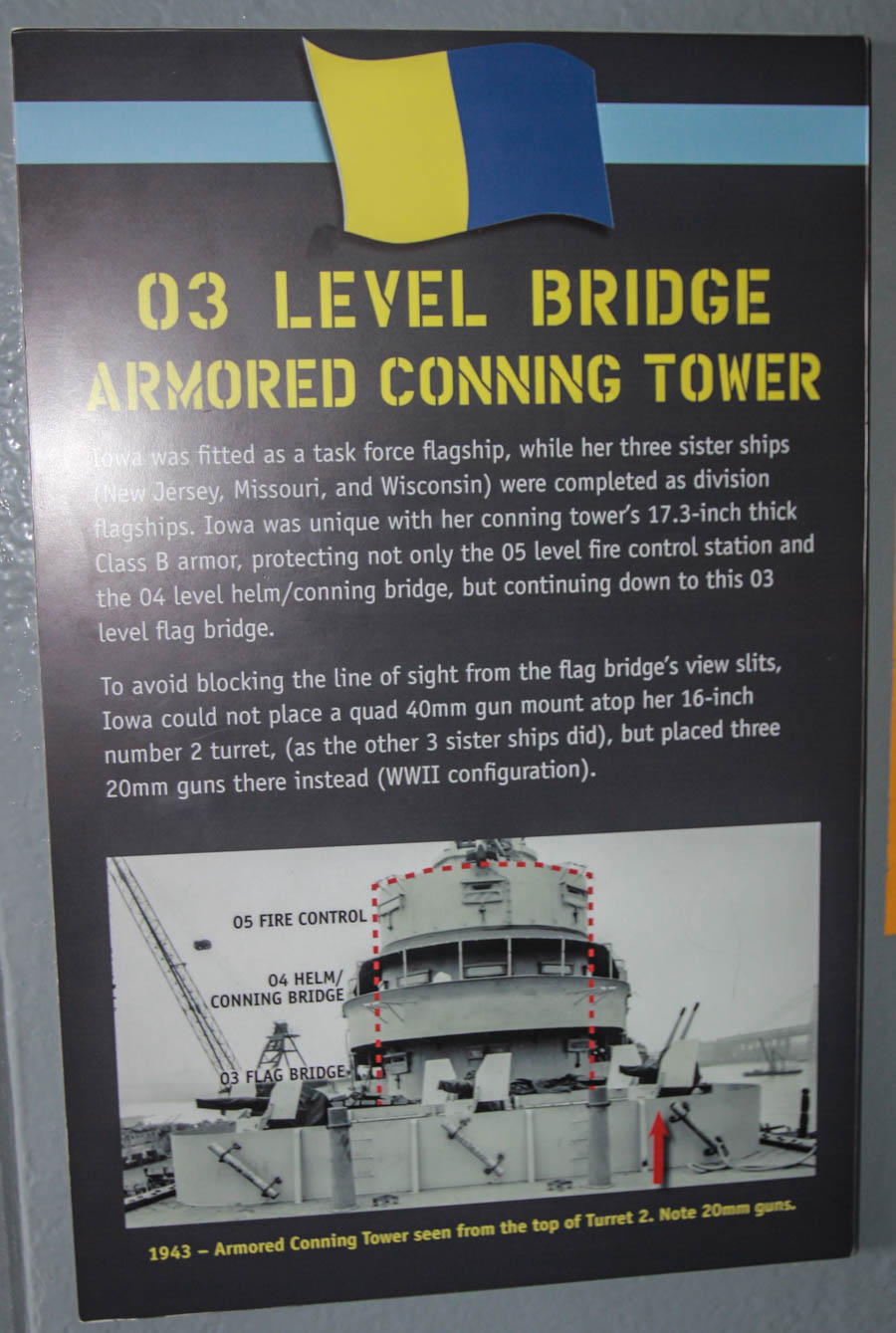
17 inches of steel (Class B Armor) was three decks tall
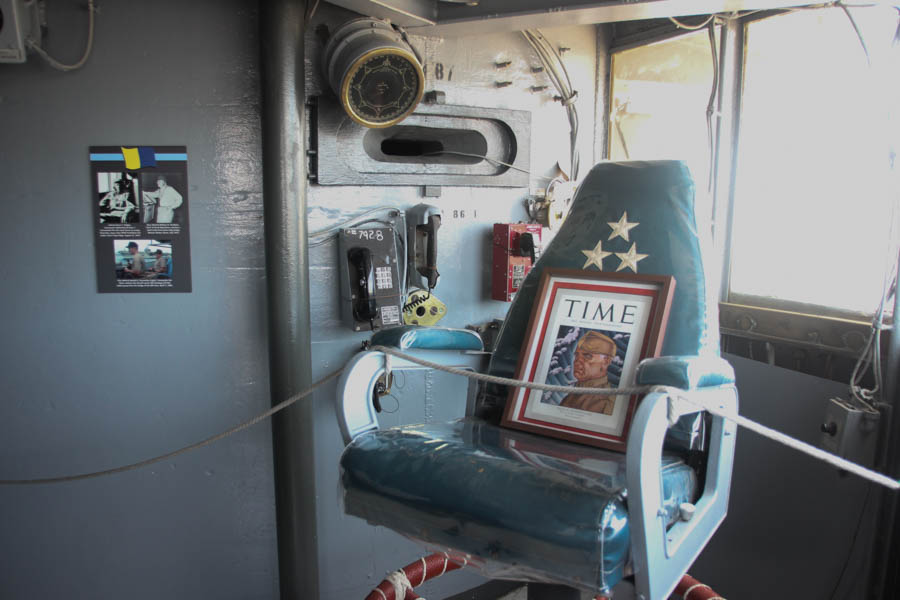
The "Admirals Bridge" is one deck below the main bridge. The purpose of an Admiral's bridge is to have a place where the Fleet commander and his staff can run the fleet without interfering with the operation of his host ship and vice versa.

The bridge area outside the armored area was fairly open
Did You Know? - Larger warships typically had a heavily armored conning tower from which the command crew could direct the activities of the ship. This armored conning tower became controversial because it severely restricted visibility, an important consideration in a sea fight.
Observations could only be made through narrow slits. Some degree of armor protection (rarely more than heavy splinter protection) was also provided for range finders and other vital fire control elements.
Larger warships typically had a heavily armored conning tower from which the command crew could direct the activities of the ship. This armored conning tower became controversial because it severely restricted visibility, an important consideration in a sea fight.
Observations could only be made through narrow slits. Some degree of armor protection (rarely more than heavy splinter protection) was also provided for range finders and other vital fire control elements.
Deck Four - Command/Conning Bridge
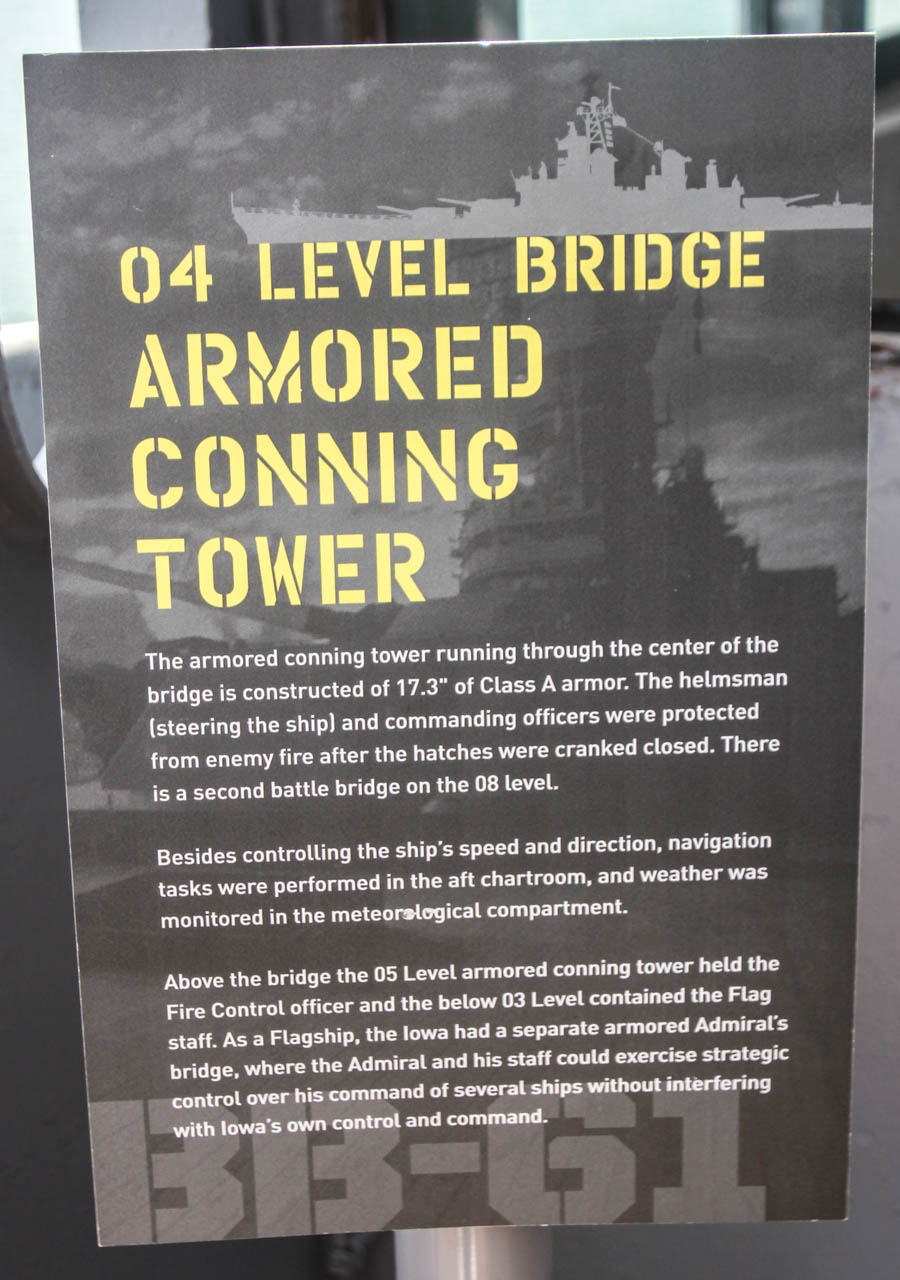
It was an amazing structure
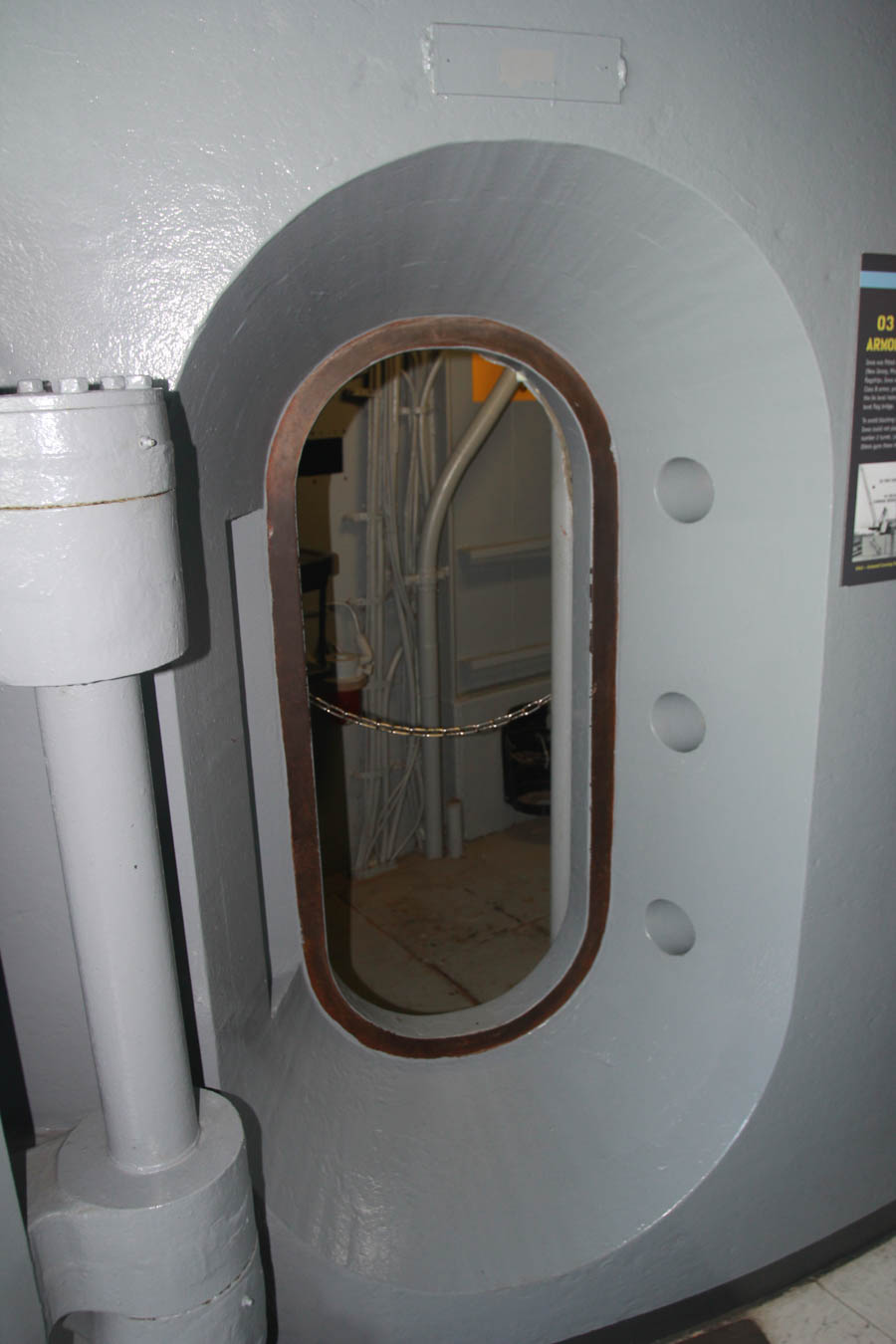
It looked like a vault in a bank
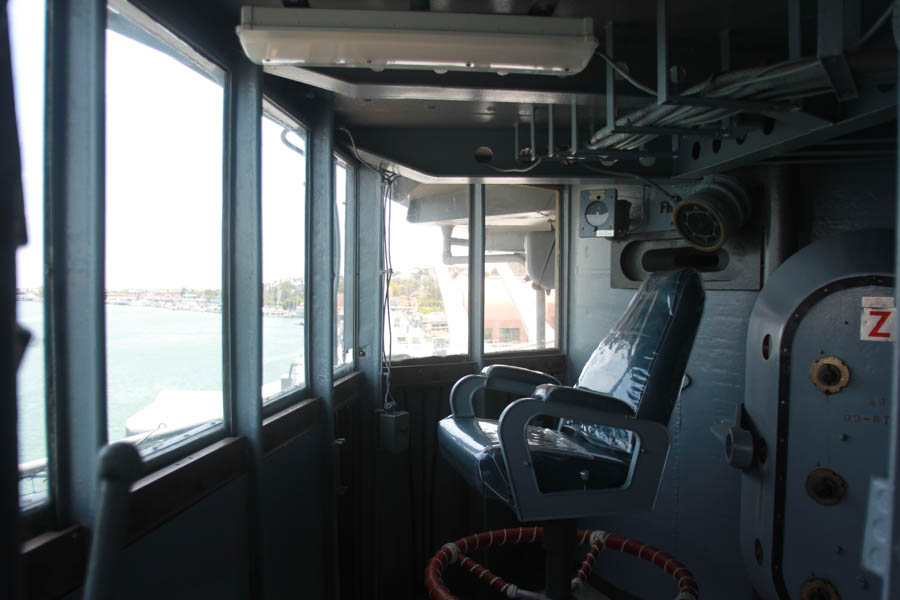
The slot above the chair is where the commander could see out
He could use the periscope
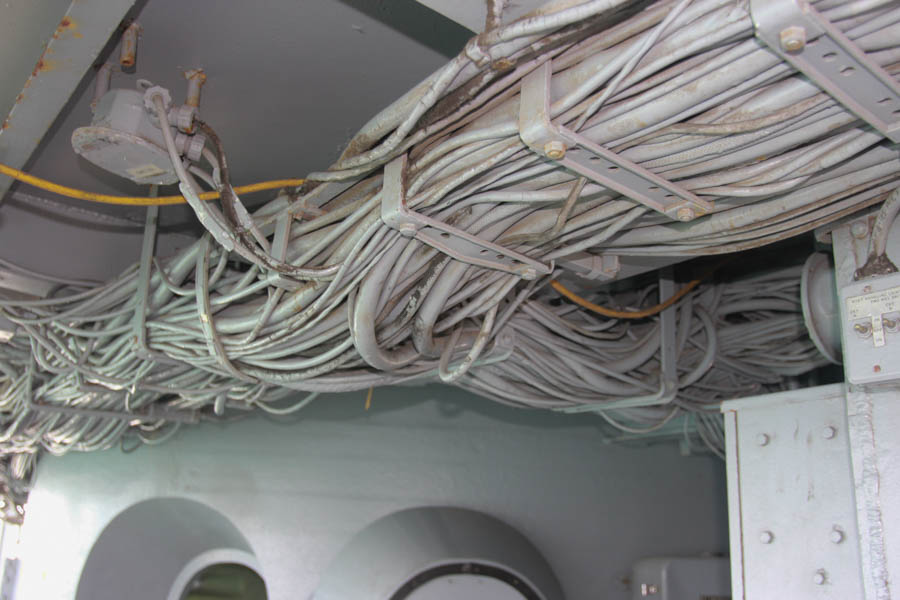
They had loads of wiring in WWII
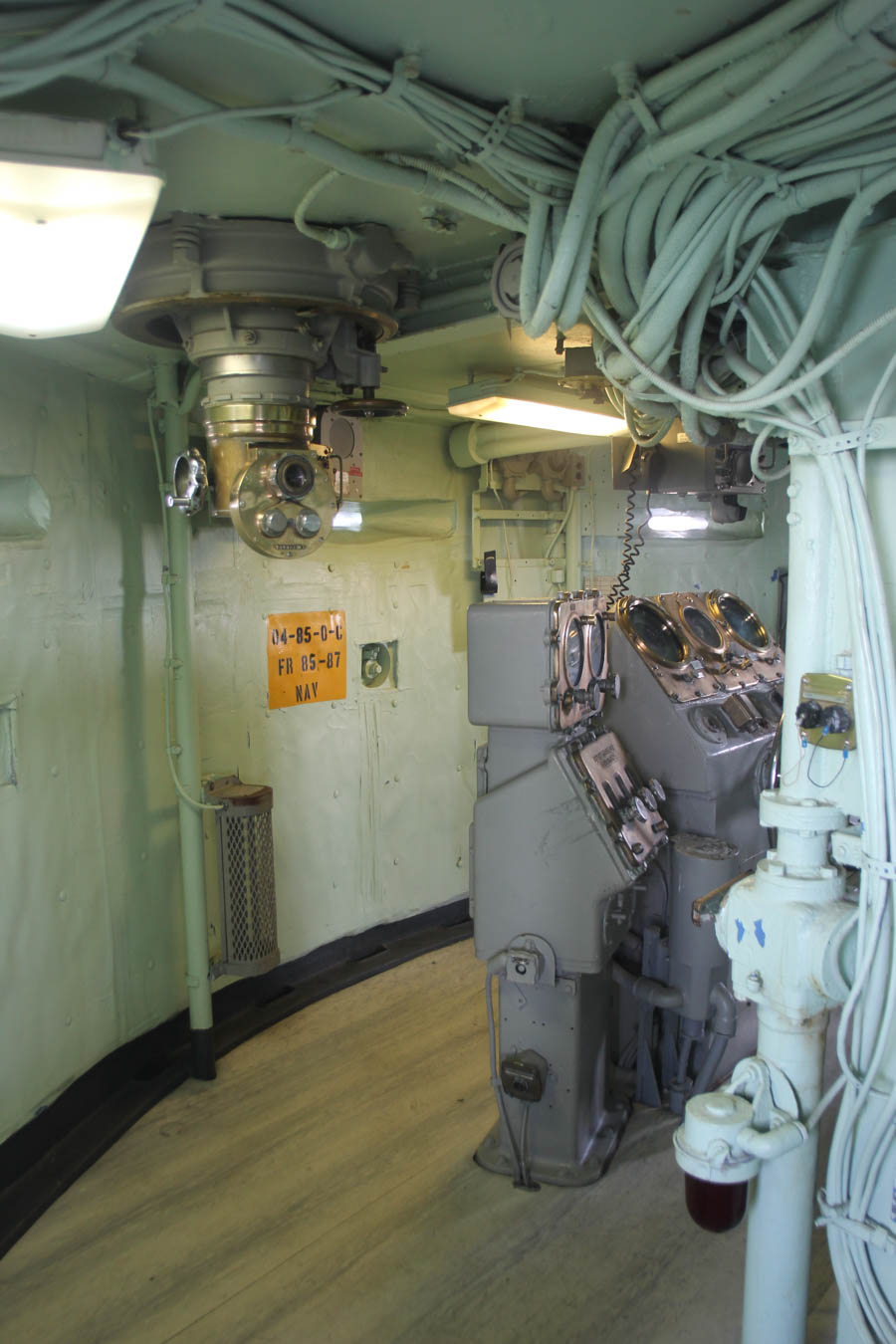
Inside the vault they used a periscope to see out
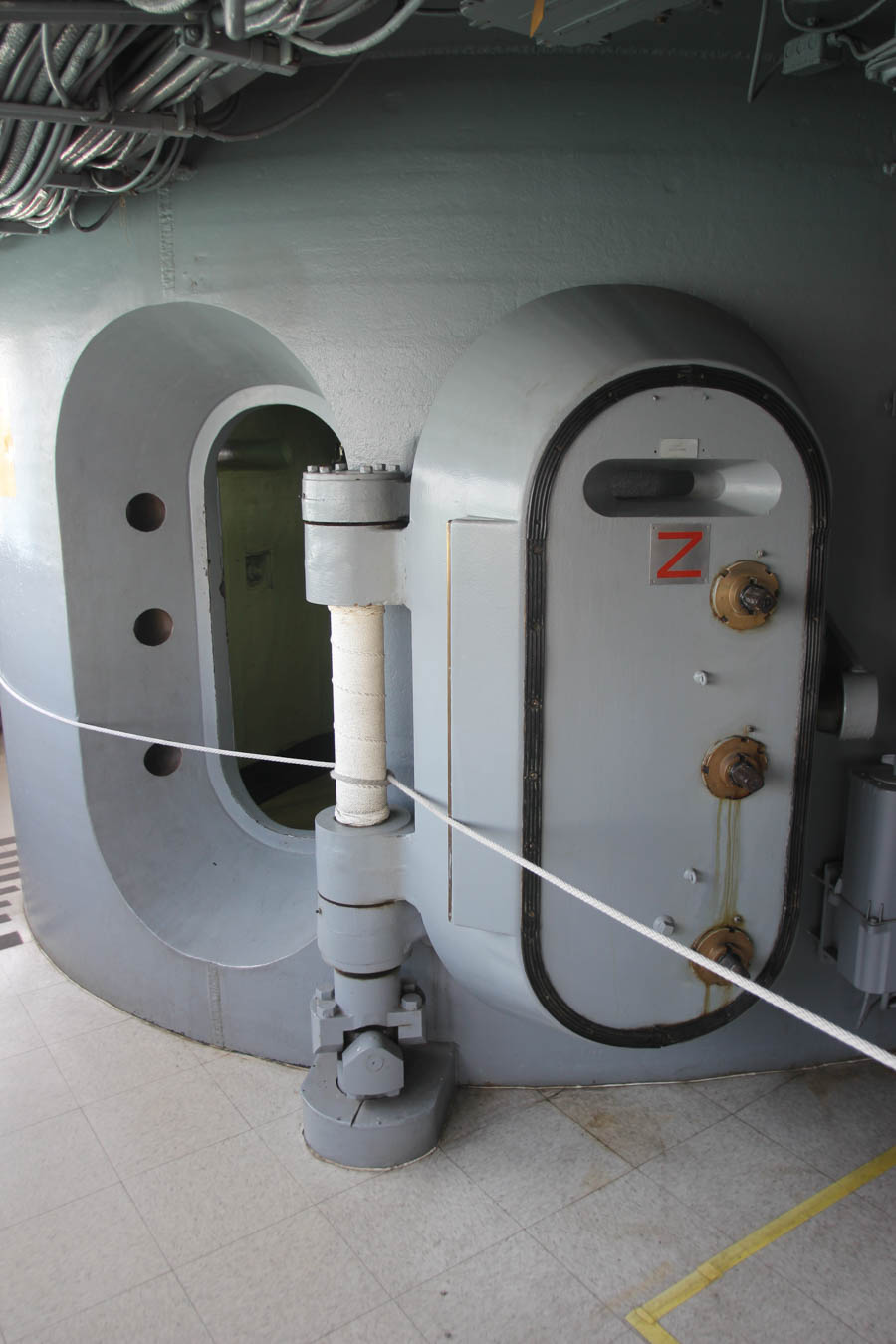
When the door closed they were well protected
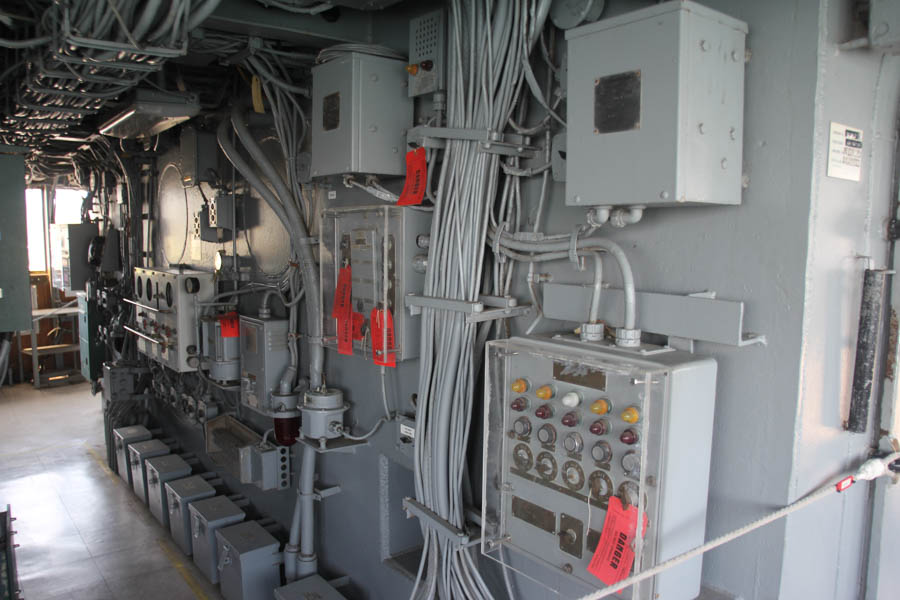
Fire control was behind the vault

Not a lot of visibility
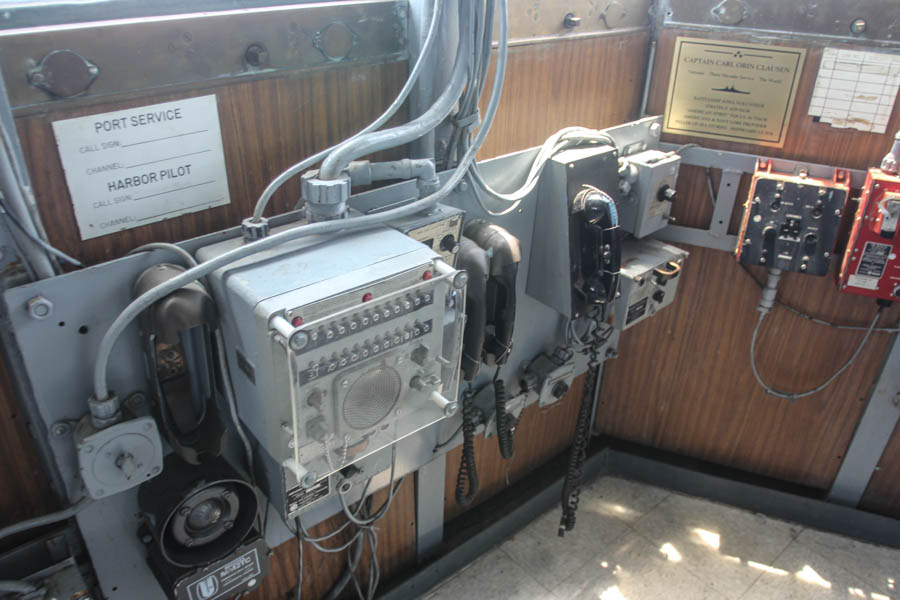
On the less protected bridge was enough to control the boat when not under fire
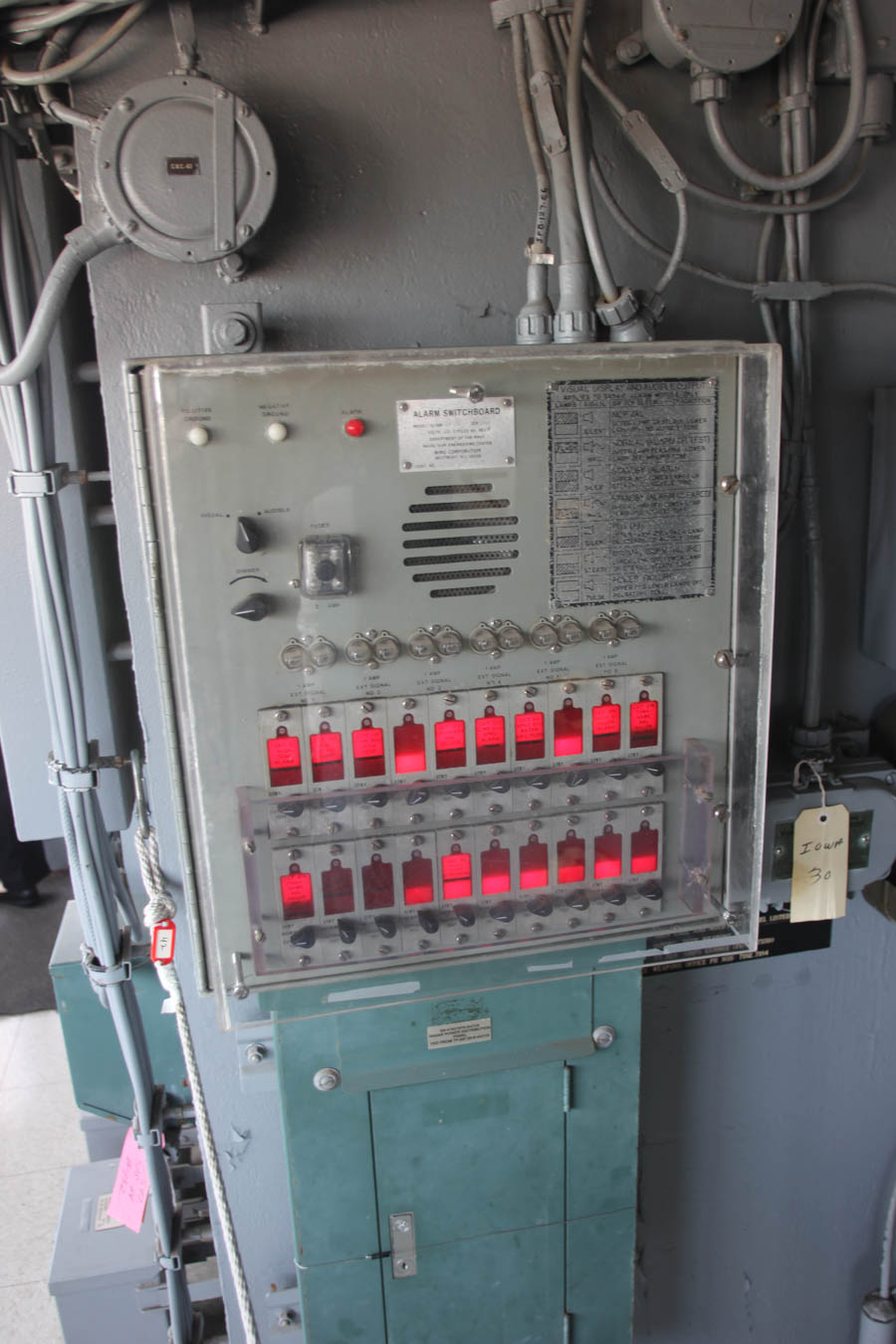
The alarm provided the bridge essential information
The Ship Was Re-Outfitted in the 1980's
Did You Know? - As part of President Ronald Reagan's and Secretary of the Navy John F. Lehman's effort to create an expanded 600-ship Navy, Iowa was reactivated and moved under tow to Avondale Shipyard near New Orleans, Louisiana, for refitting and equipment modernization in advance of her planned recommissioning.
Iowa was then towed to Ingalls Shipbuilding, Pascagoula, Mississippi, where over the next several months the battleship was upgraded with the most advanced weaponry available. Among the new weapons systems installed were four MK 141 quad cell launchers for 16 AGM-84 Harpoon anti-ship missiles, eight Armored Box Launcher mounts for 32 BGM-109 Tomahawk missiles, and a quartet of Phalanx Close-in weapon system Gatling guns for defense against enemy anti-ship missiles and enemy aircraft.
Iowa was the first battleship to receive the RQ-2 Pioneer Unmanned Aerial Vehicle. She could carry up to eight of the remotely controlled drones, which replaced the helicopters previously used to spot for her nine 16 inch (410 mm)/50 cal Mark 7 guns.
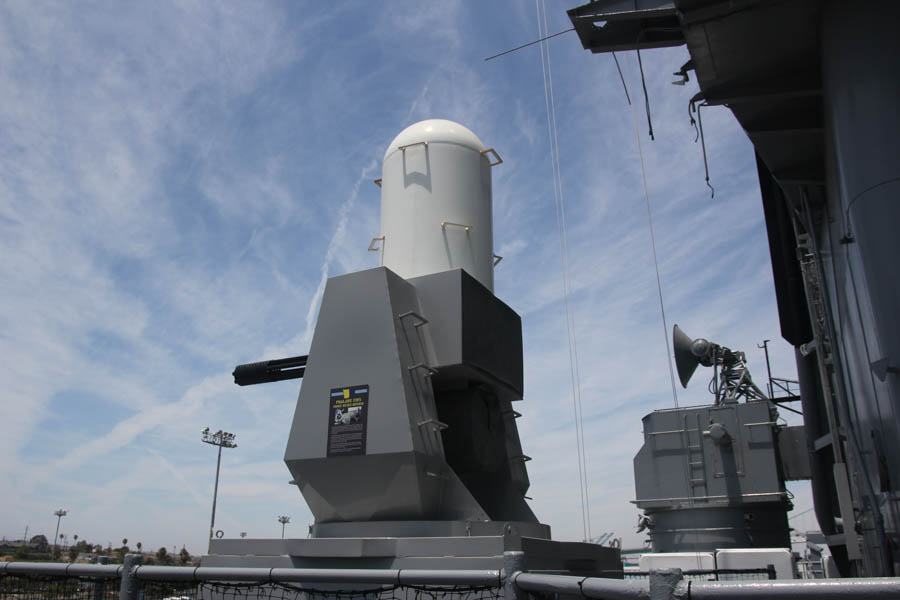
Phalanx Close In Weapons System (CWIS) was mean looking
Did You Know? - The Phalanx CIWS is a close-in weapon system for defense against anti-ship missiles. It was designed and manufactured by the General Dynamics Corporation, Pomona Division (now a part of Raytheon). Consisting of a radar-guided 20 mm (0.79 in) Gatling gun mounted on a swiveling base, the Phalanx has been used by multiple Navies around the world, notably the United States Navy on every class of surface combat ship
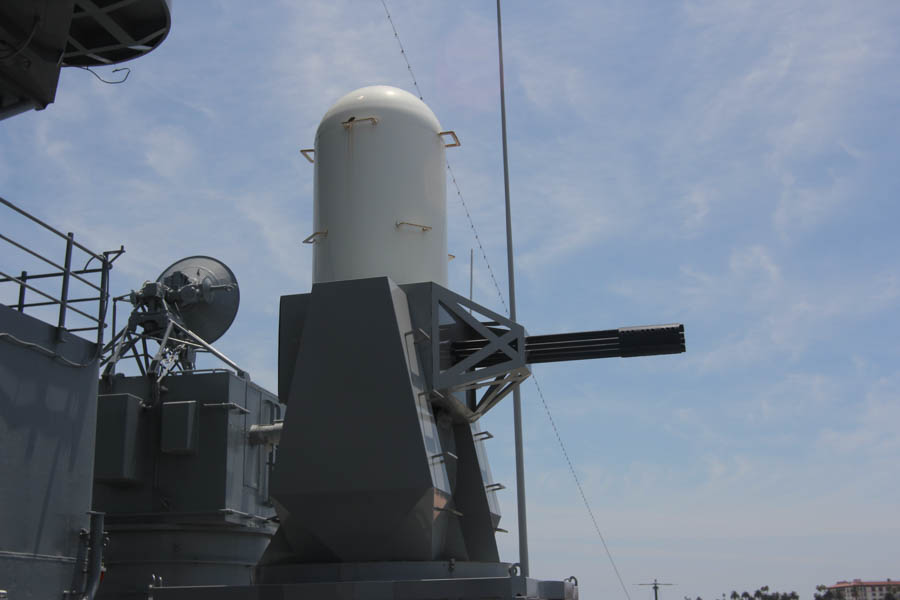
Looks like a guard standing duty.... Oh! It is!

With all of them going it would delivery 18,000 rounds a minute
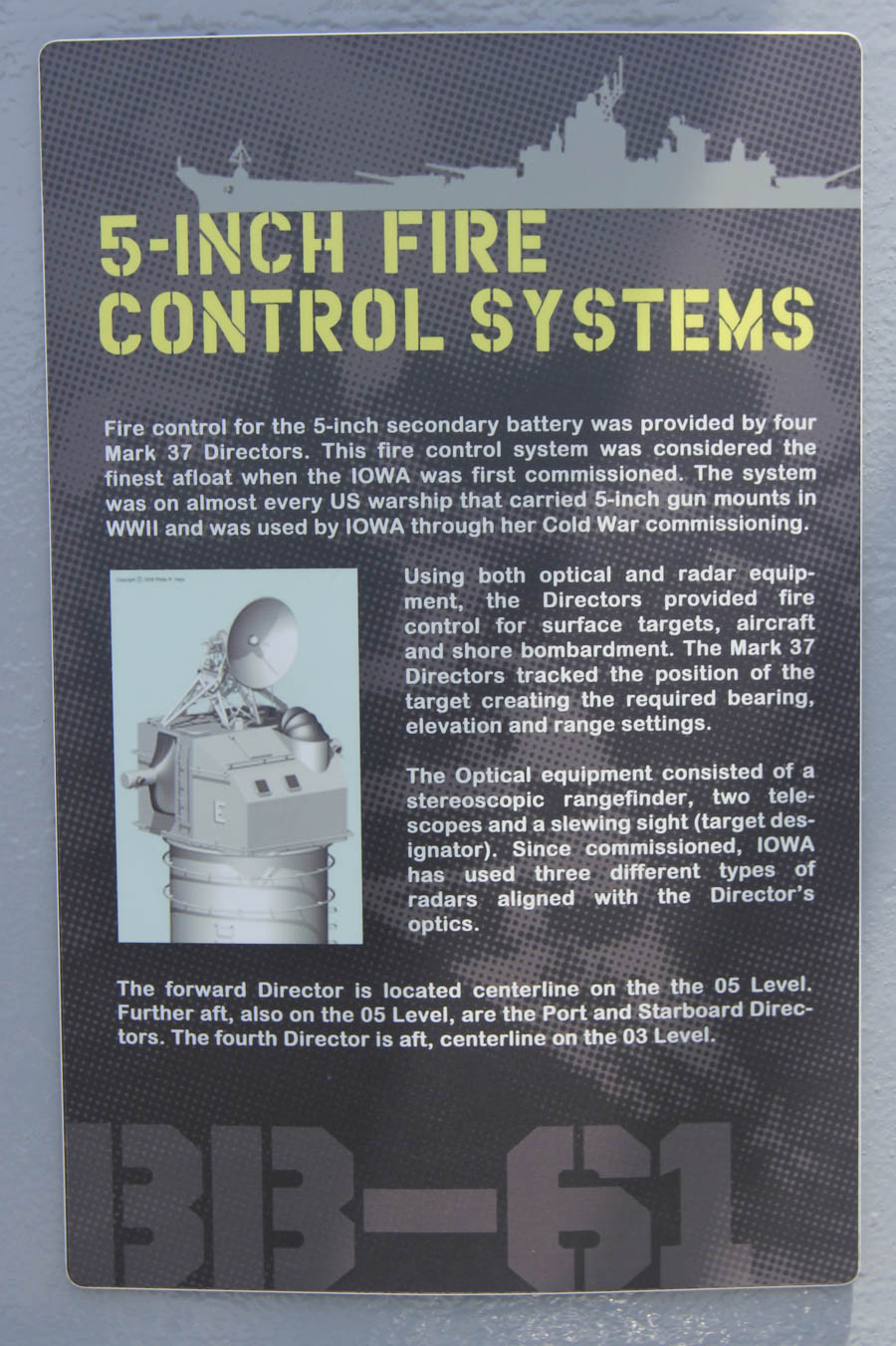
Four fire-control systems are on the ship
for the 5" guns

It could pump out 4,500 rounds per minute...
The dish on the right (starboard) is the 5-inch Gun Fire Control System
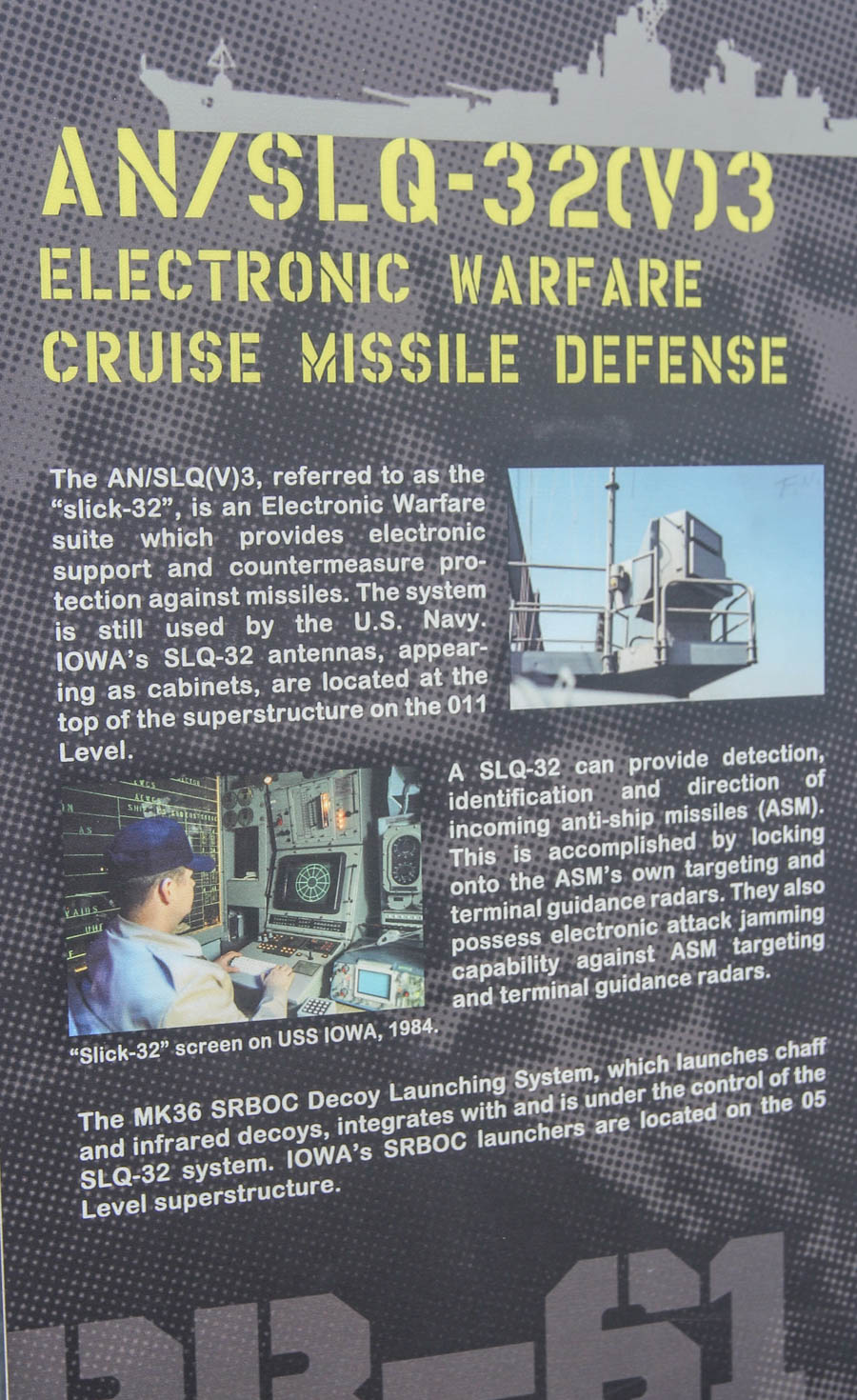
Electronic warfare was integrated into the ship in the 1980's
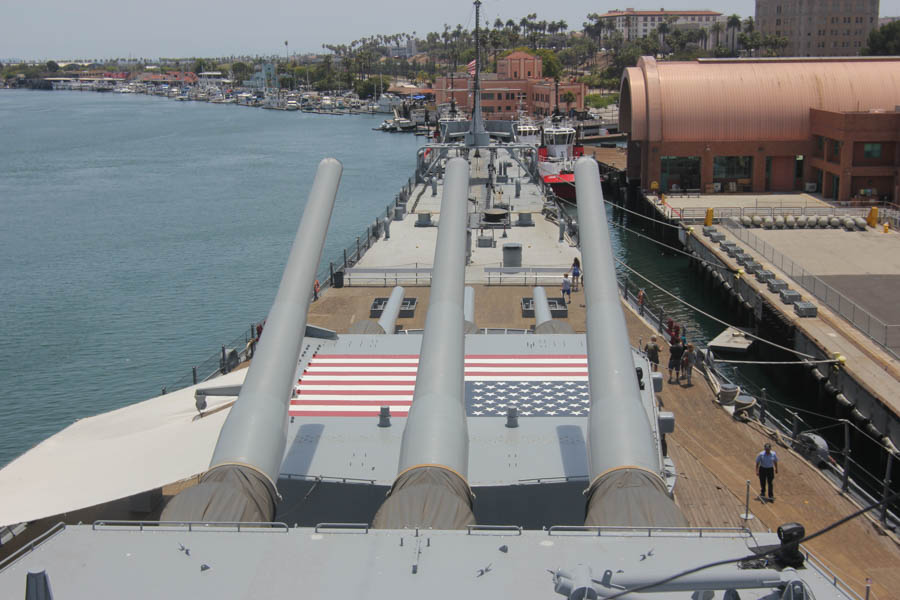
We loved seeing the flag on the top of the turret
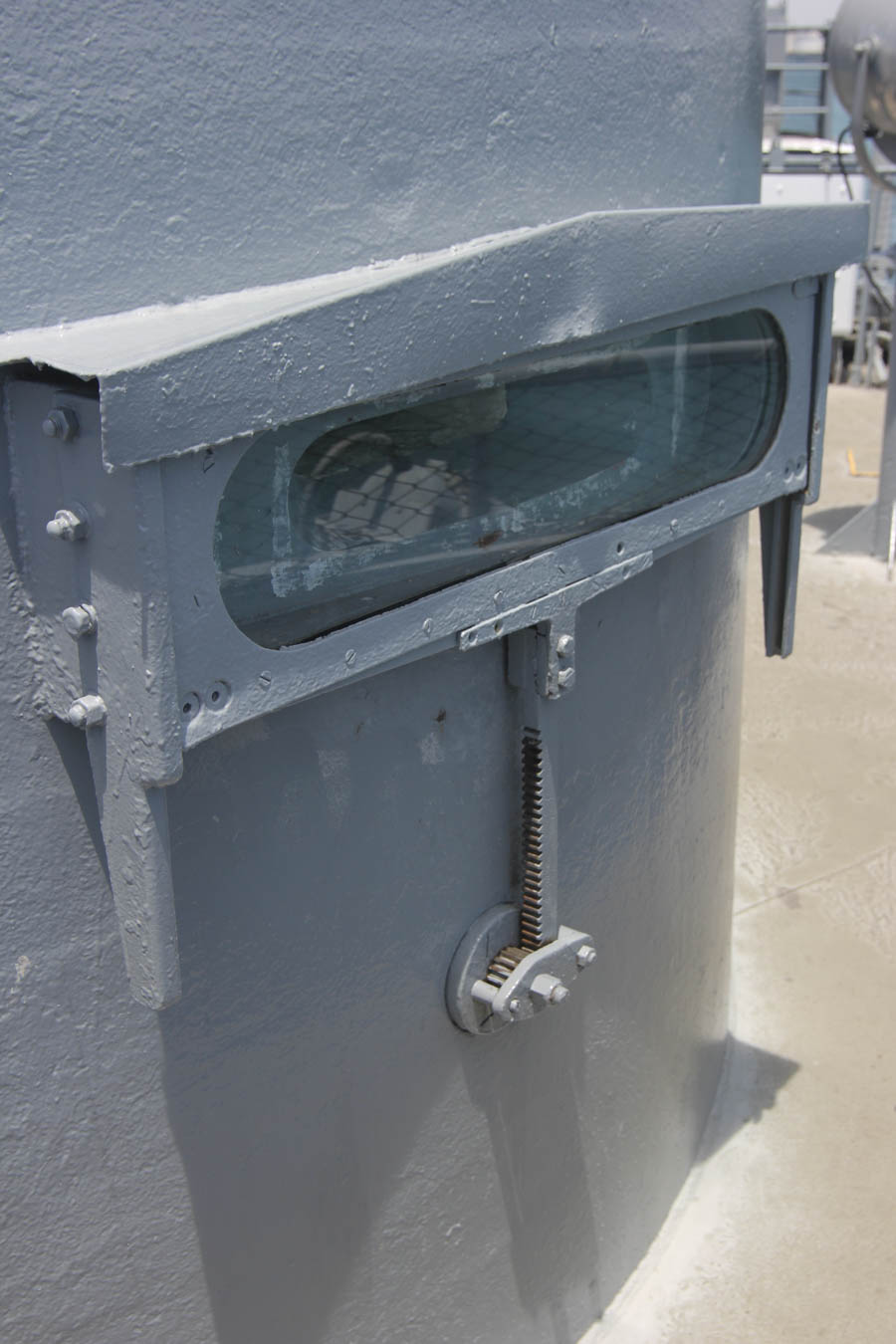
A protected viewing port on the top
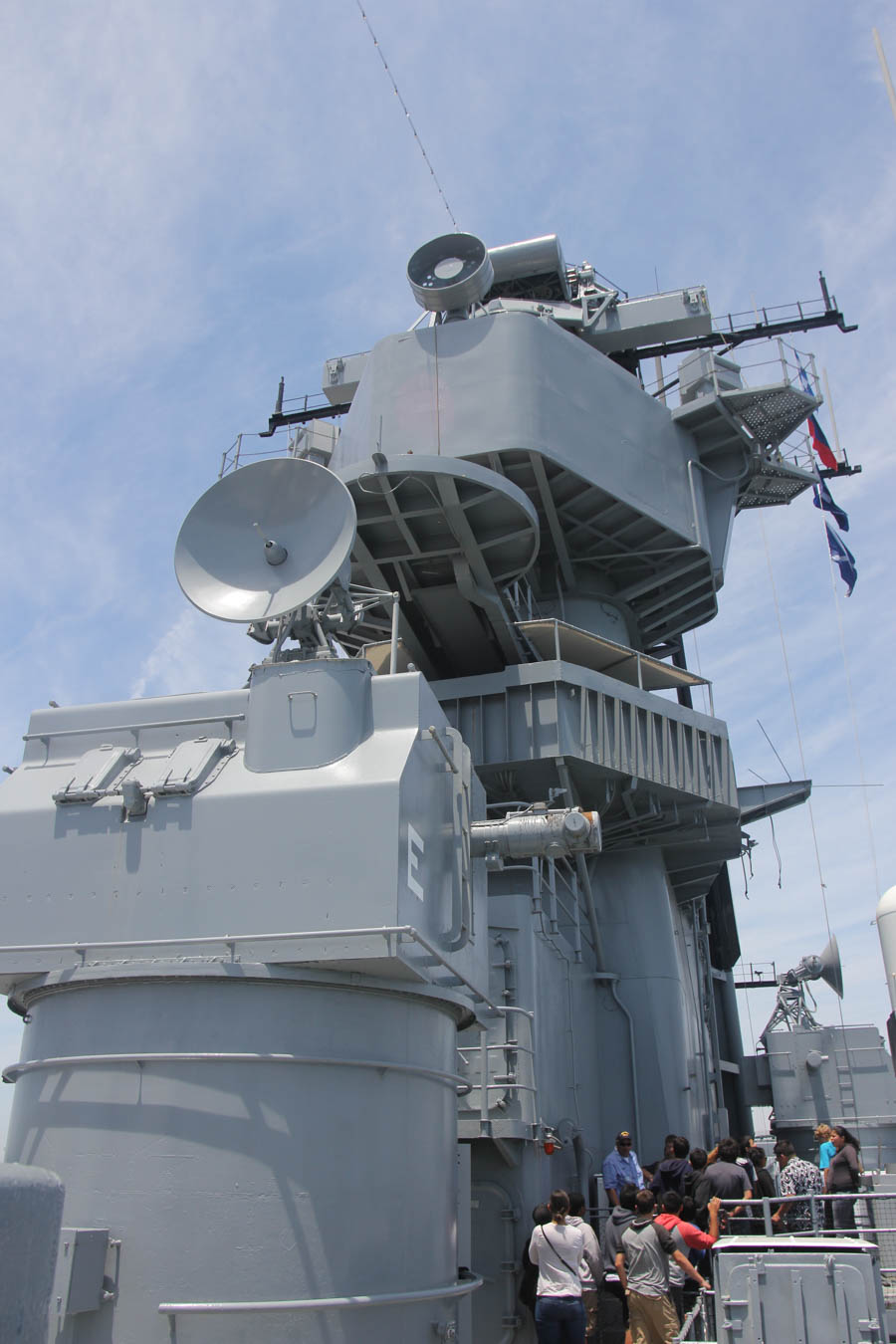
Radar signs said "When operating, do not get closer than 6 feet"
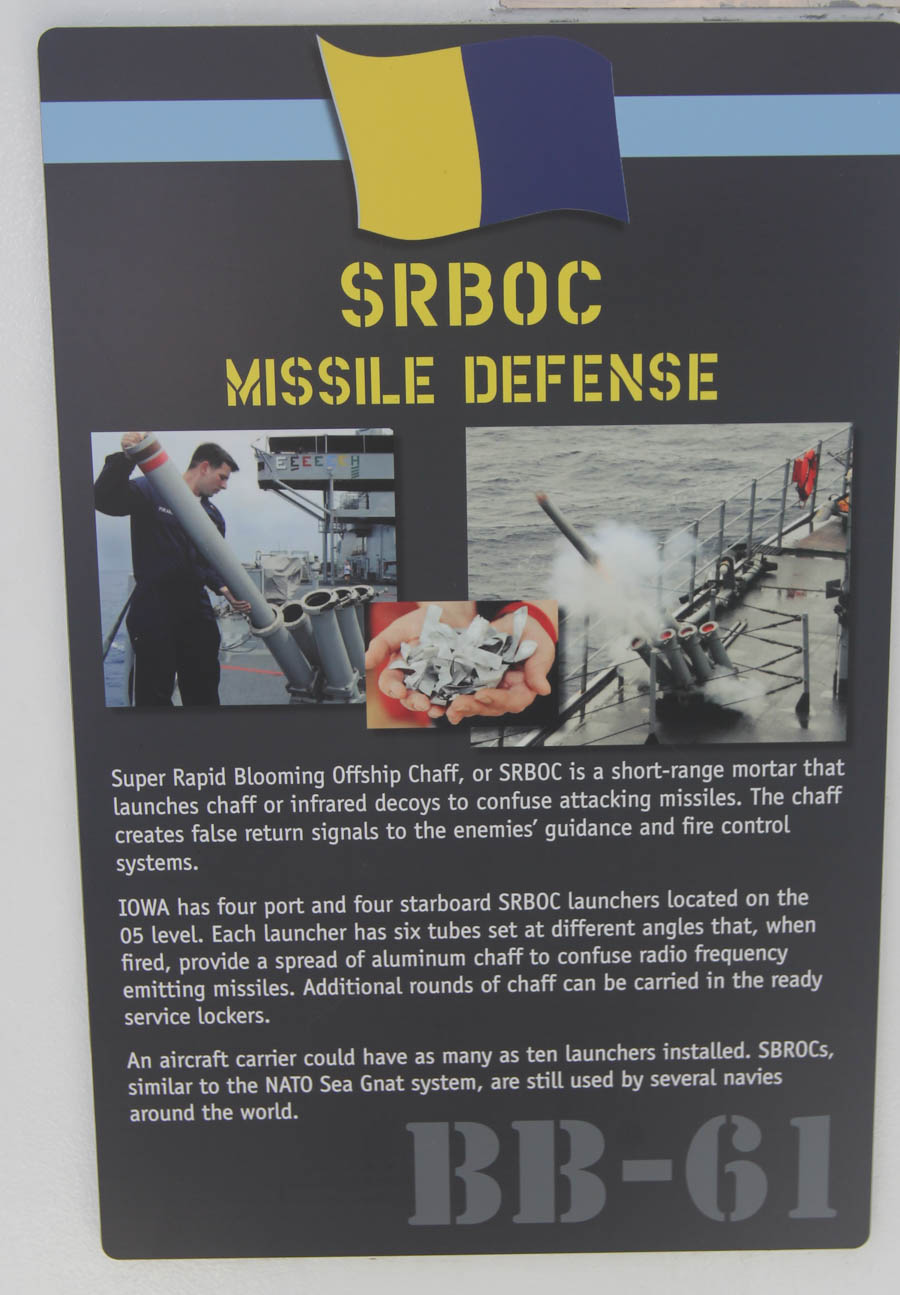
Chaff gets thrown everywhere
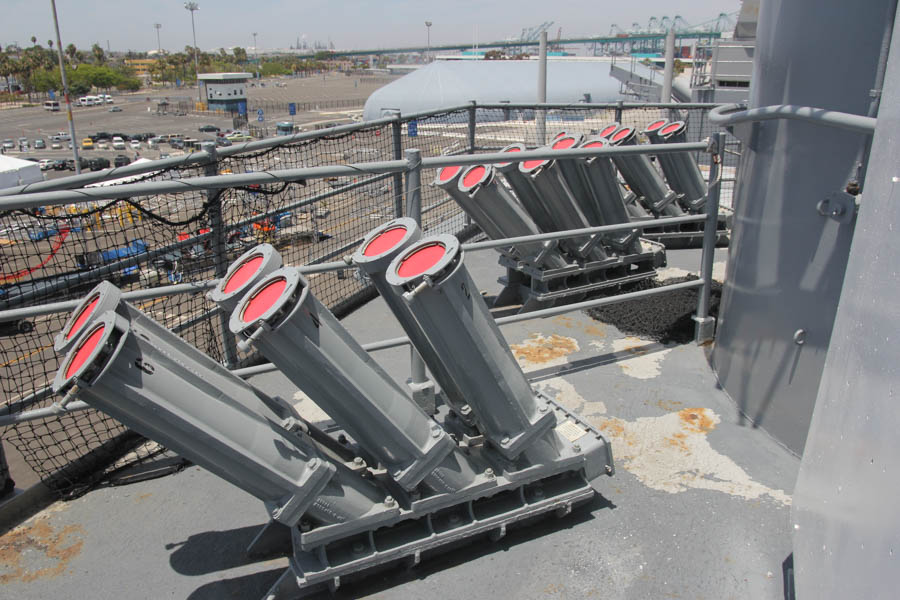
Loaded for bear
Did You Know? - The BAE Systems Mark 36 Super Rapid Bloom Offboard Countermeasures Chaff and Decoy Launching System (abbreviated as SRBOC or "Super-arboc") is a short-range mortar that launches chaff or infrared decoys from naval vessels to foil anti-ship missiles. Each launcher has three tubes set at a 45-degree angle, and three tubes set at a 60 degree angle, providing an effective spread of decoys and countermeasures to defeat radio frequency emitting missiles. The SRBOC can also be fitted with the TORCH infrared "flare" decoy system. A typical ship's load is 20 to 35 rounds per launcher.
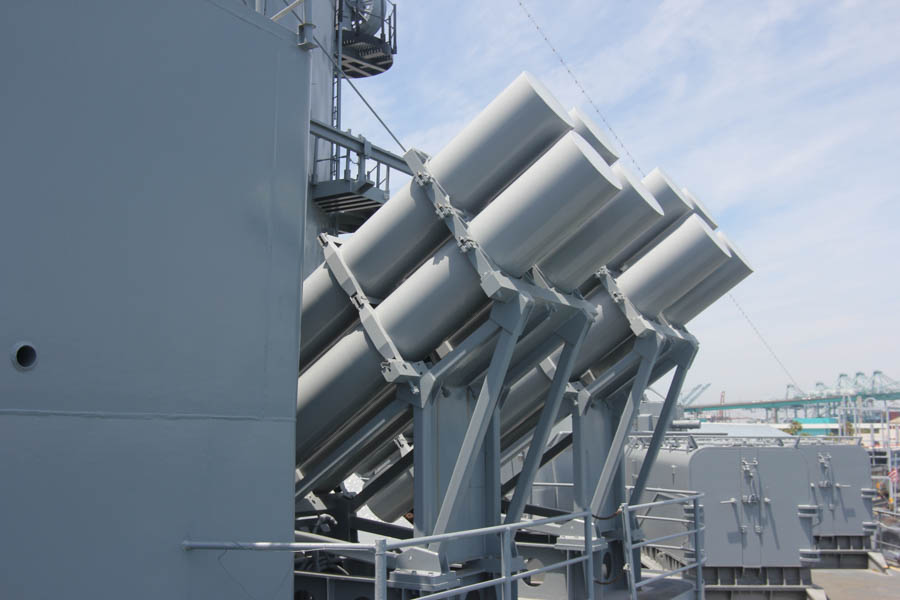
Ready to go!
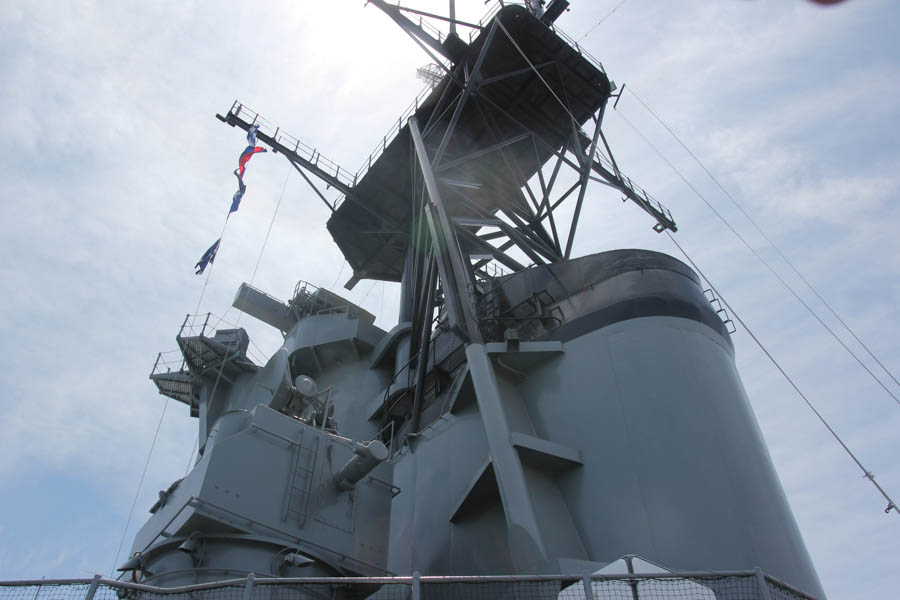
Up on top is an antenna farm... This area is not yet open
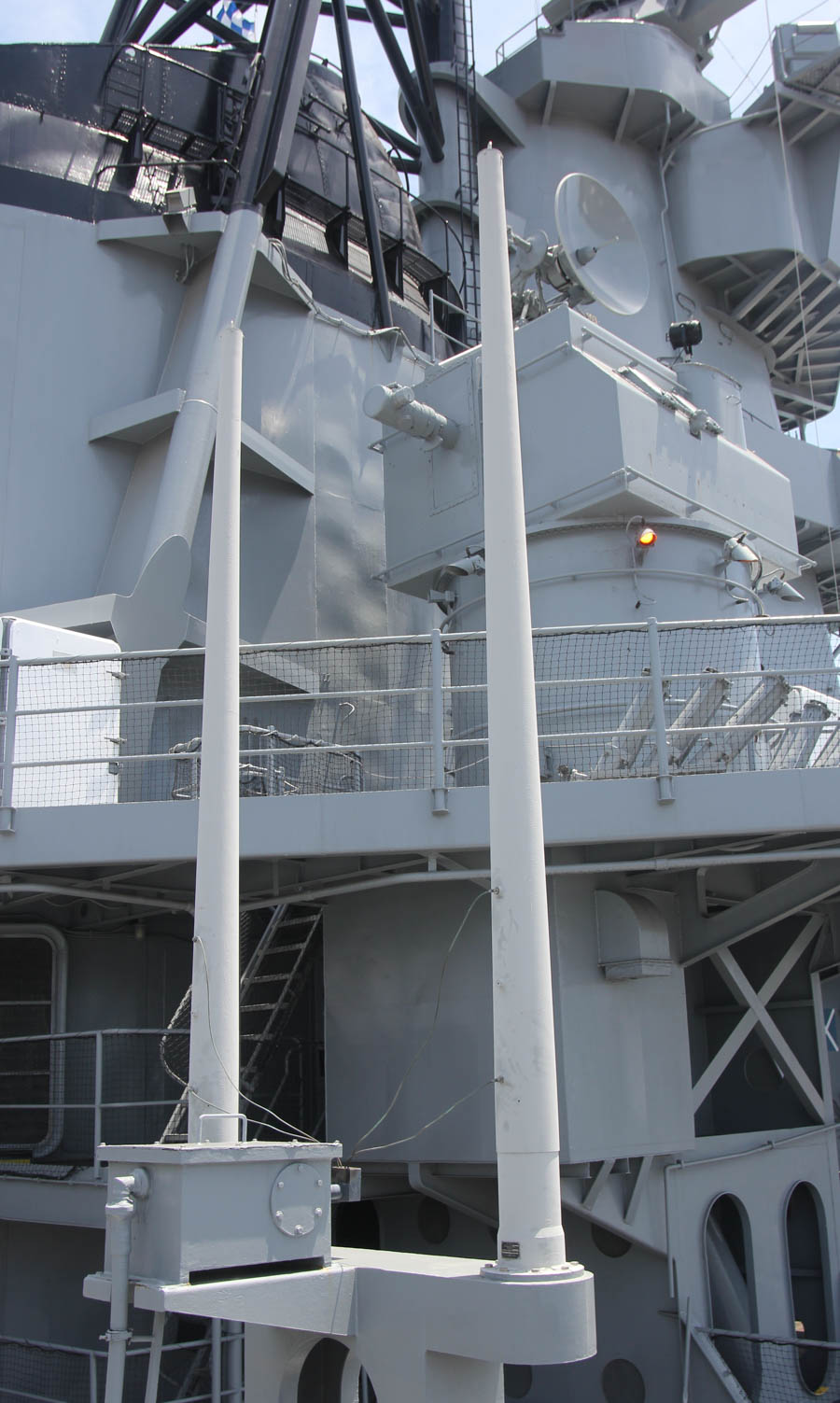
The two antennas were for medium wave communications
The Harpoon System Was Impressive
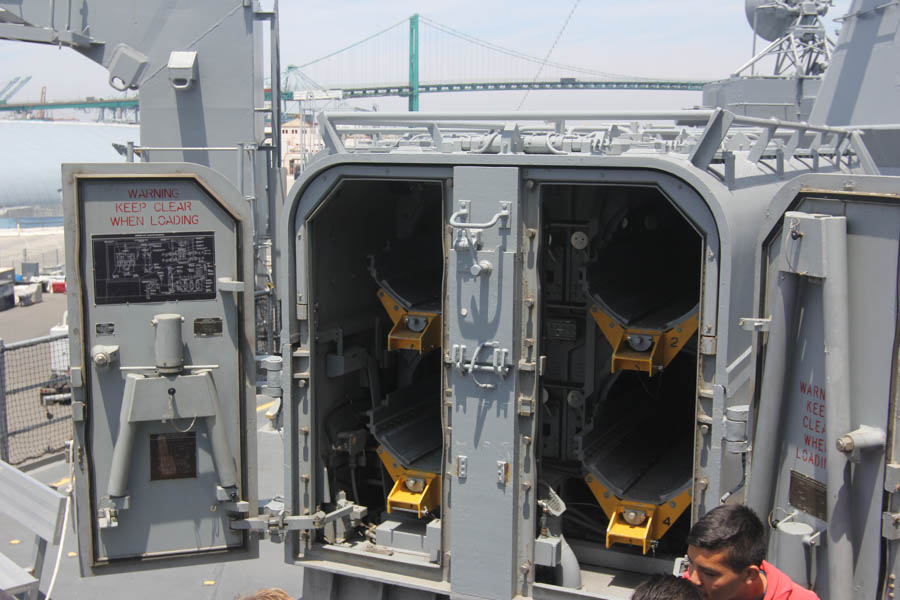
Ready for loading
Did You Know? - The Harpoon is an all-weather, over-the-horizon, anti-ship missile system, developed and manufactured by McDonnell Douglas (now Boeing Defense, Space & Security). In 2004, Boeing delivered the 7,000th Harpoon unit since the weapon's introduction in 1977. The missile system has also been further developed into a land-strike weapon, the Standoff Land Attack Missile (SLAM).
The regular Harpoon uses active radar homing, and a low-level, sea-skimming cruise trajectory to improve survivability and lethality.
The Mark 143 Armored Box Launcher (ABL) is a four-round protected launch container for the BGM-109 Tomahawk Cruise Missile.
Fitted to the Iowa-class battleships following their 1980s recommissioning upgrade, each ABL contains four ready-to-fire Tomahawks. The use of ABLs on these vessels rather than a non-armored solution was necessitated to enable the battleships to continue to exploit the capability provided by their heavy armor and reduce the vulnerability of the delicate missiles within. Eight ABLs were fitted to each of the four recommissioned battleships, providing 32 weapons to each ship.
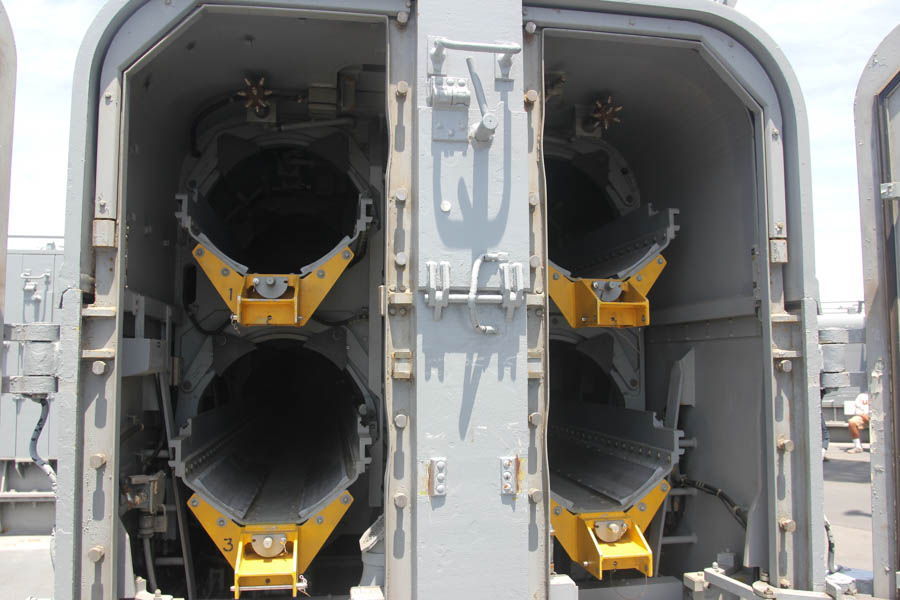
Fire power for 100's of miles
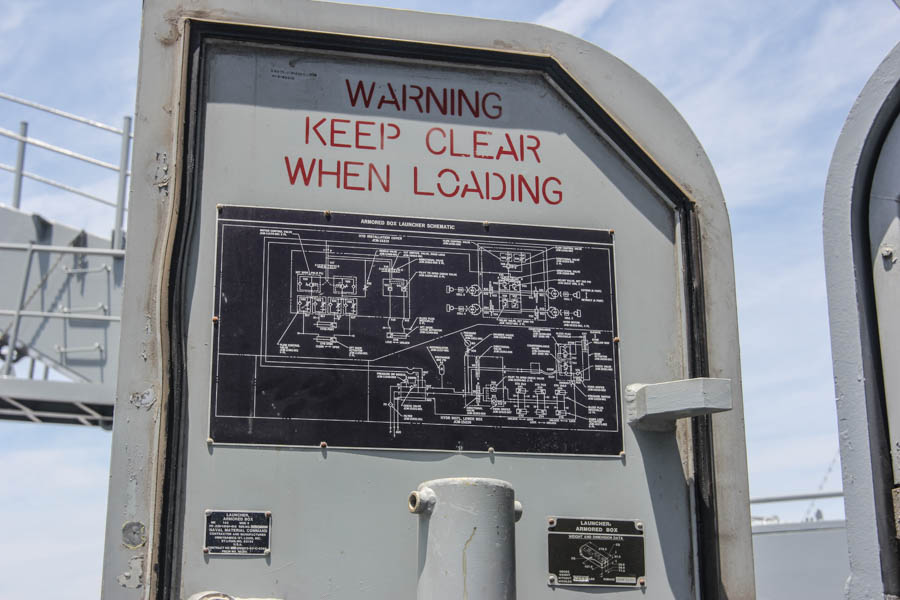
No kidding!
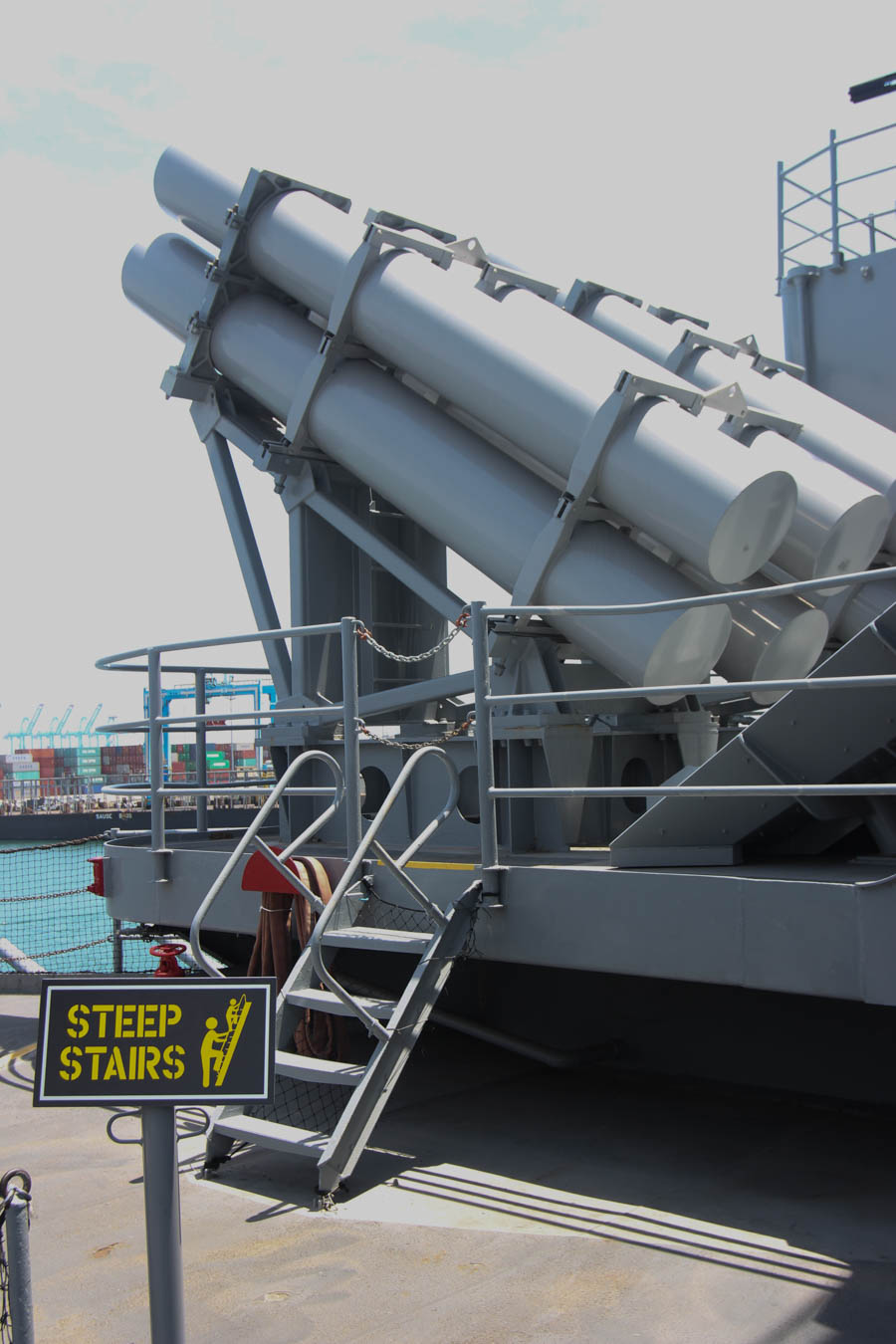
Additional harpoons are looking awesome
We Return To The Main Deck For A While

The teak deck is slowly being replaced

We donated to the effort
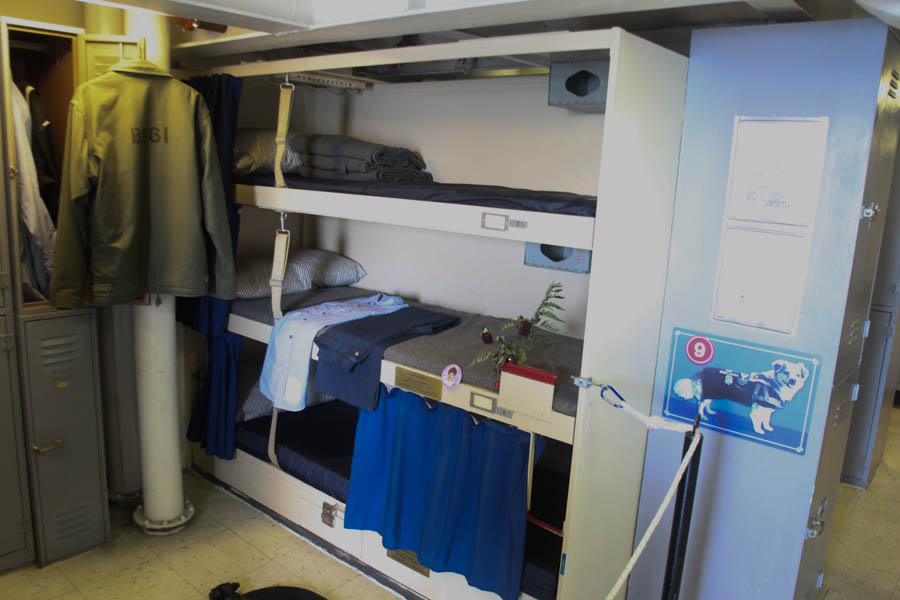
Additional berths for the crew
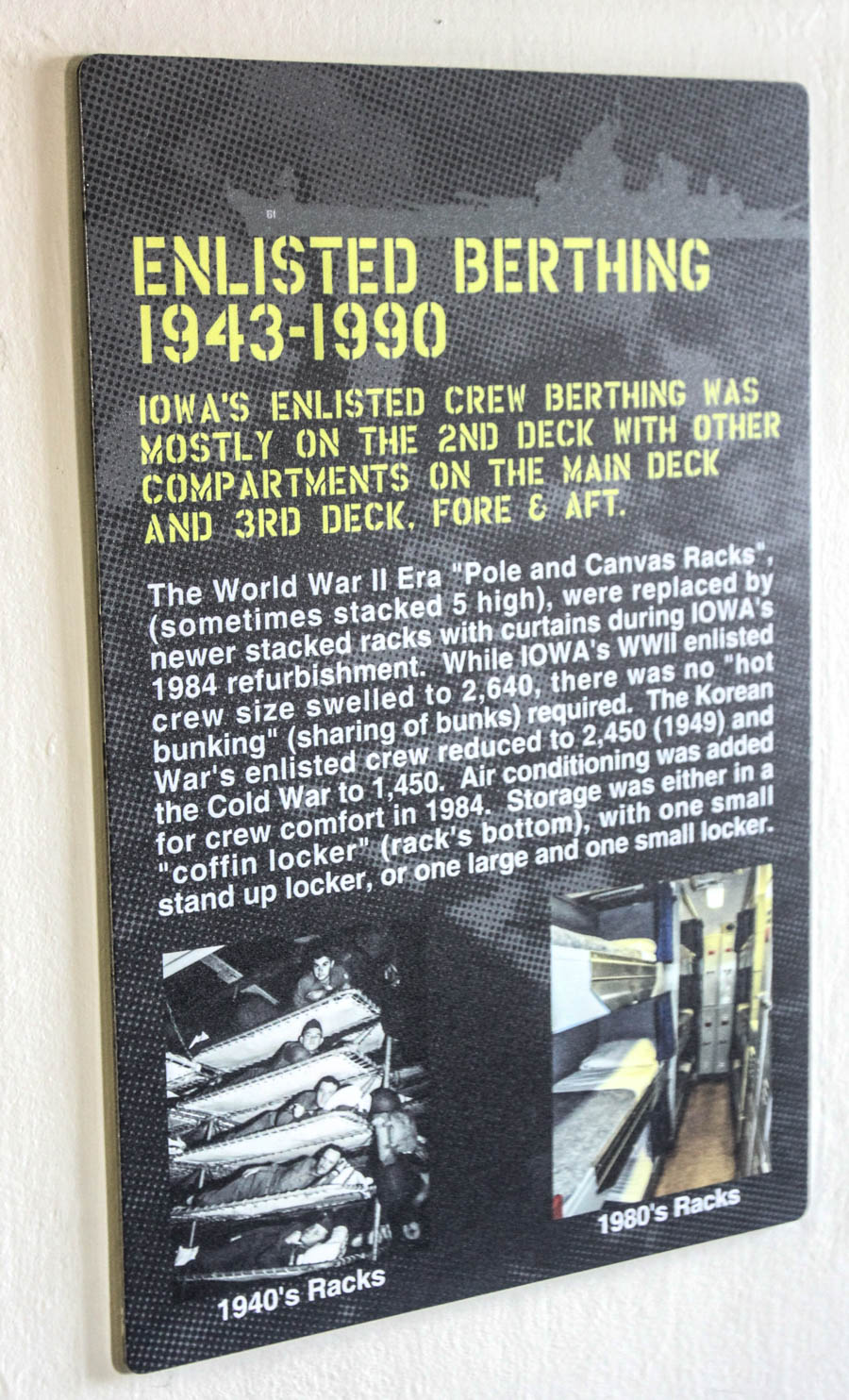
We decided we like the 1980's
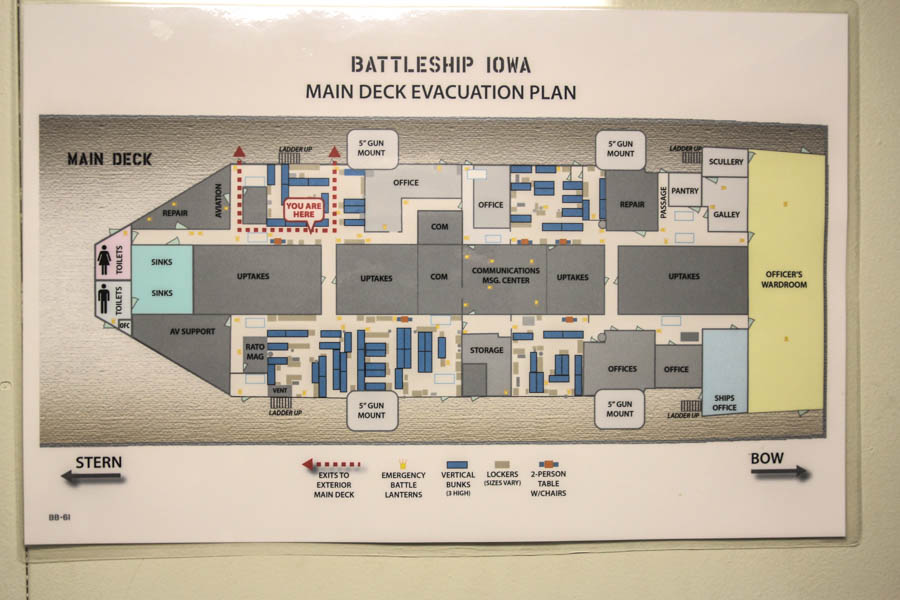
The ship is so big it needed evacuation plans posted everywhere
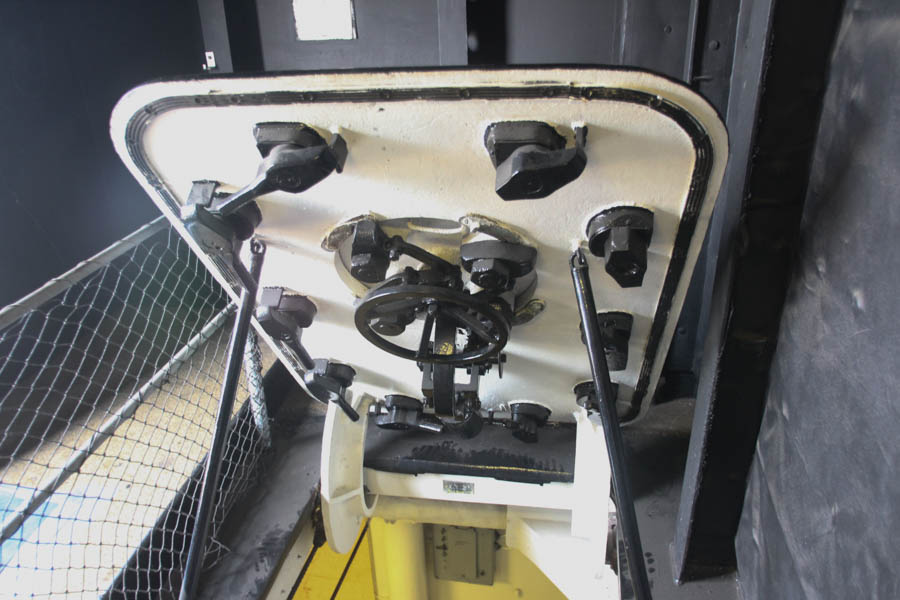
When they lock down the hatches, they stay locked!
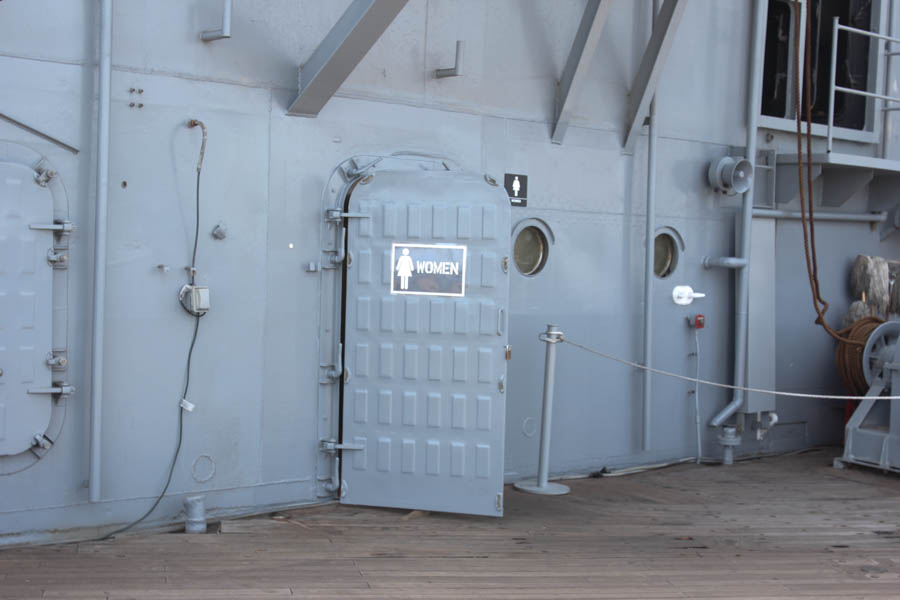
Ah ha.... It was indeed time!

The after 16 inch gun and it pointing mechanisms
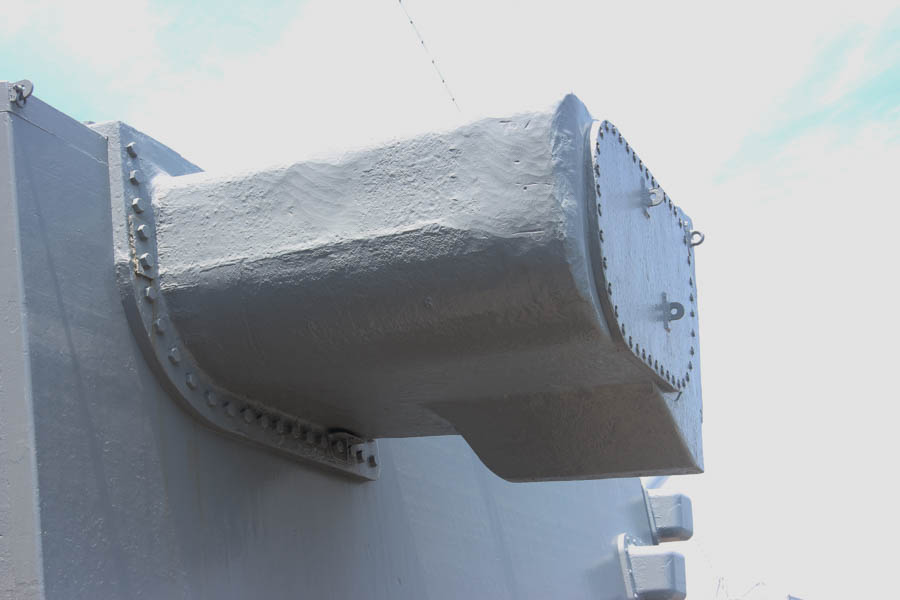
Extremely heavy armor
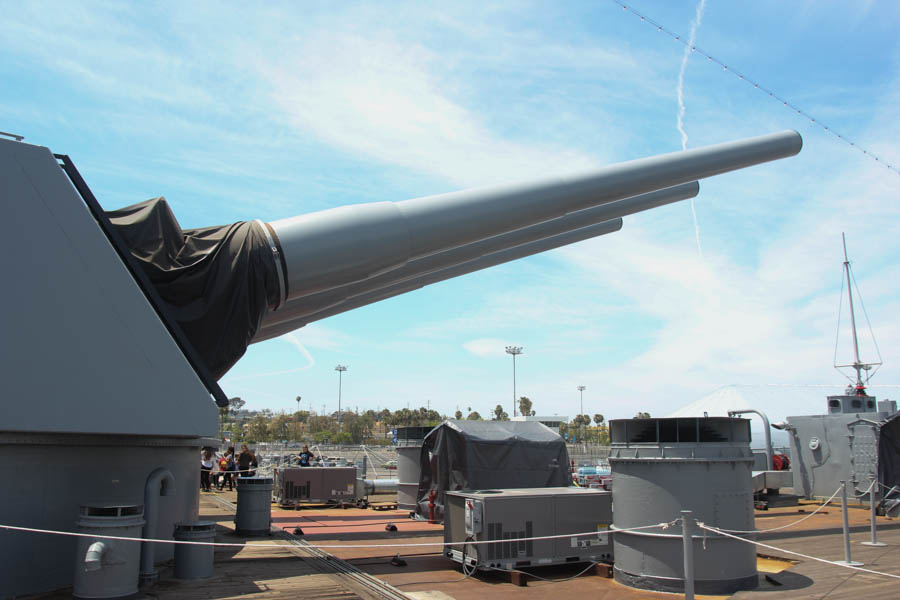
Amazing to see what firepower existed on this ship!
Did You Know? - The Armor Piercing (AP) shell fired by these guns is capable of penetrating nearly 30 feet (9 m) of concrete, depending upon the range and obliquity of impact. The High Capacity (HC) shell can create a crater 50 feet wide and 20 feet deep (15 x 6 m). During her deployment off Vietnam, USS New Jersey (BB-62) occasionally fired a single HC round into the jungle and so created a helicopter landing zone 200 yards (180 m) in diameter and defoliated trees for 300 yards (270 m) beyond that.
Gun weight:
267,904 lbs. (121,519 kg) (including breech)
239,156 lbs. (108,479 kg) (without breech)
Barrell Life: 2250-300 Rounds
Back Inside - Where The Crew Dinned And The New Museum/Shop
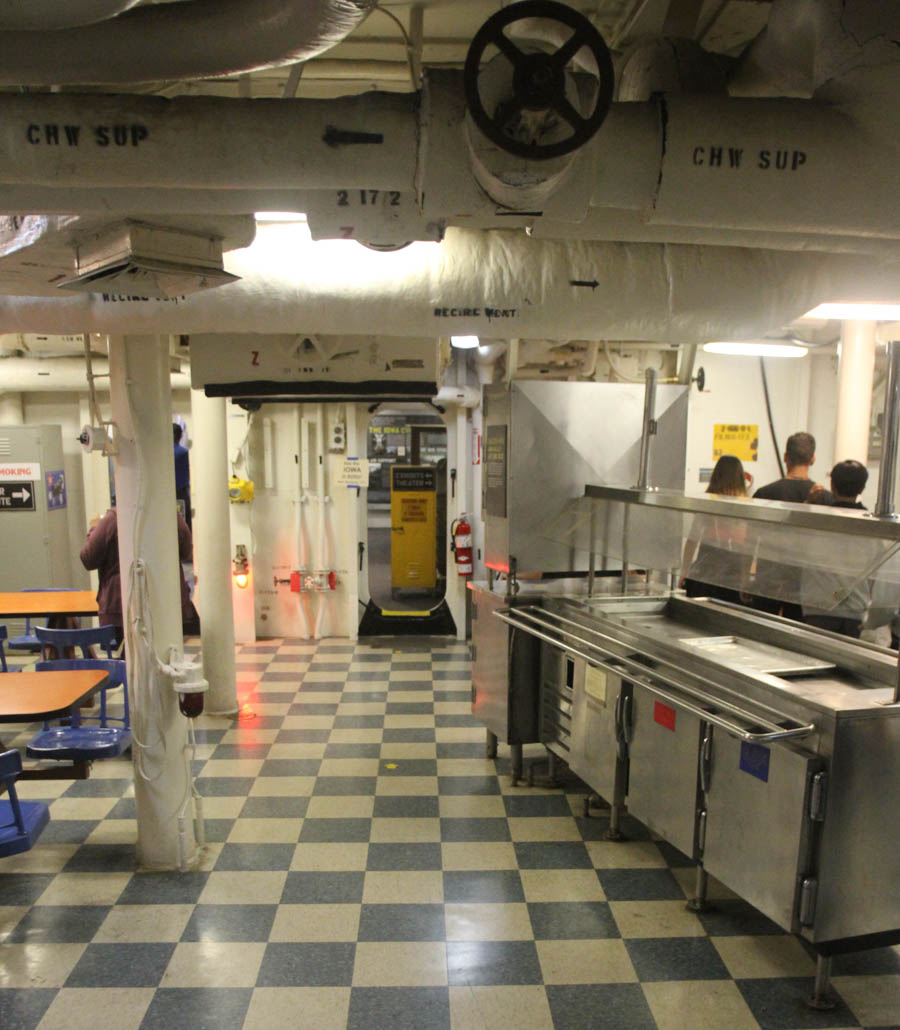
Into the crews galley and mess

They fed 2,000 people a day for months on end!

Before 1940, Los Angeles was the home of the Pacific Fleet!
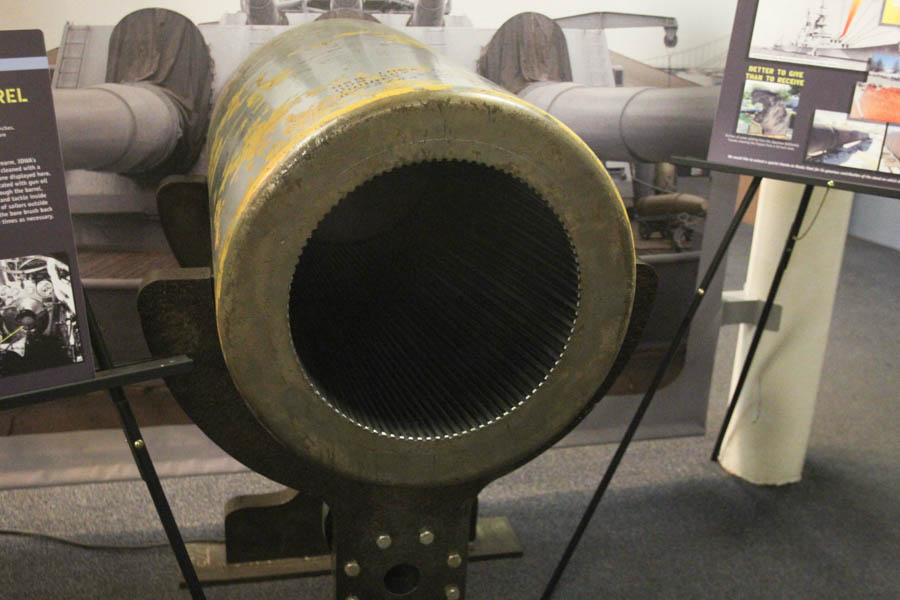
Check the rifling inside the tube
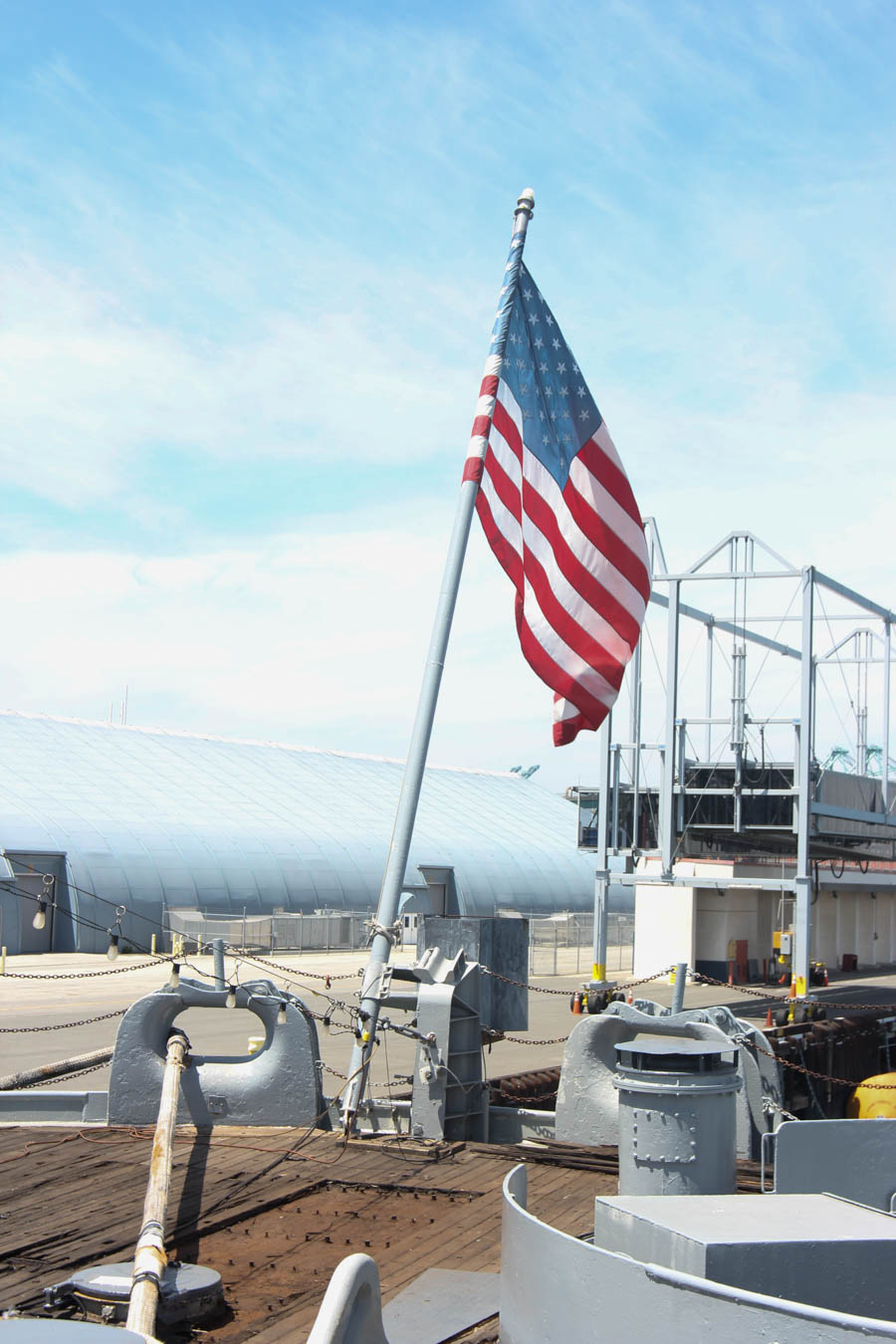
Simply beautiful
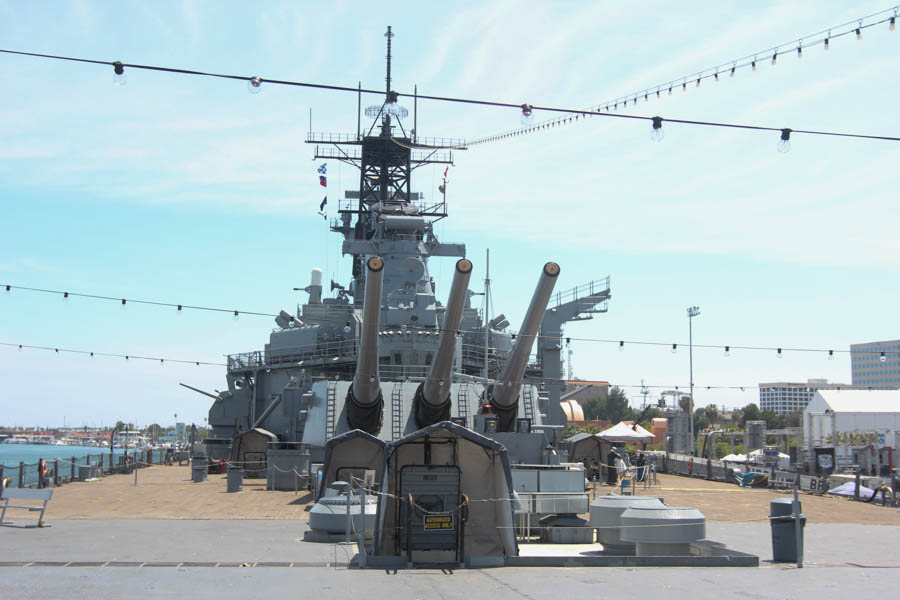
Amazing perspective
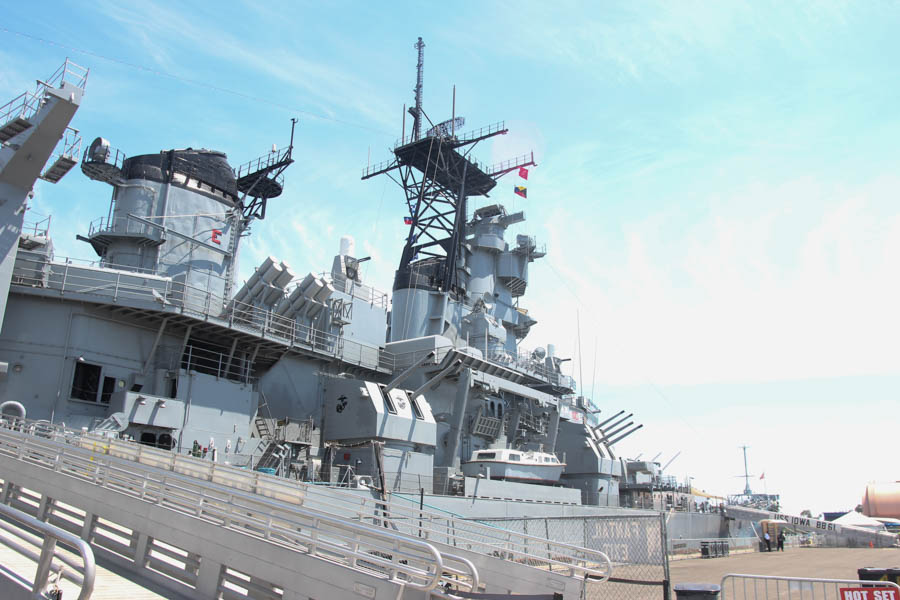
We are done with a fantastic tour
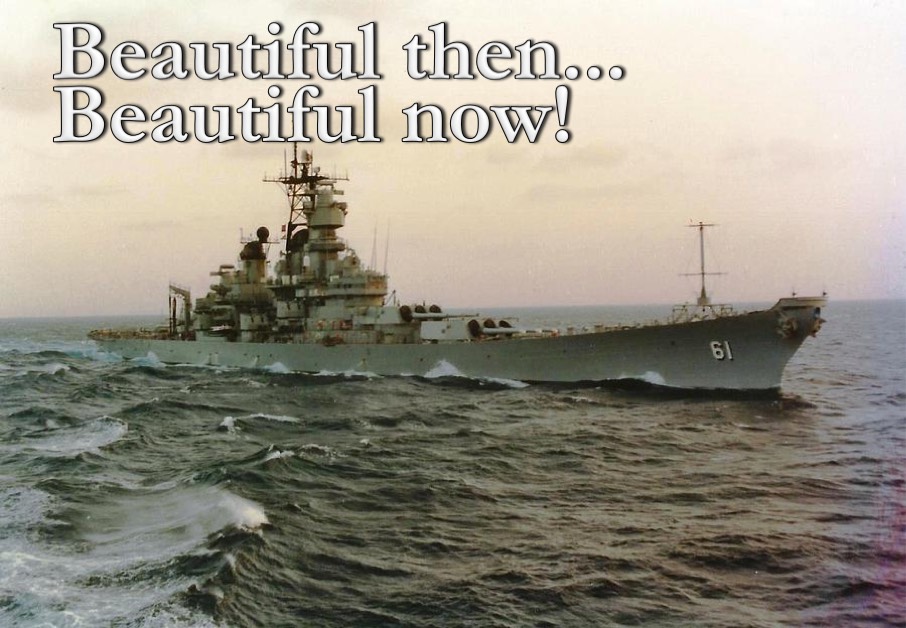
Sound: Victory At Sea
